Recorder columnist hikes Mount Greylock to plane wreckage
| Published: 06-03-2016 4:29 PM |
On a spring morning in early May, Barb Tarsa was walking her Labrador retriever Toby near her home in Adams. Tarsa and her husband Jack live at the base of Mount Greylock.
In stormy weather, gray curtains of rain move inexorably down the ridge and clouds shroud the 3,491-foot high summit. On days like that, she said, “You wouldn’t even know there’s a mountain.”
That’s a lot to miss, considering Mount Greylock State Reservation covers parts of five towns. Each year, roughly 250,000 visitors hike its 70 miles of trails, hang glide off the ledges or simply enjoy the view from the highest natural peak in Massachusetts.
Not many come for the plane wrecks.
“There’s at least three,” said Jude Stull, a self-described storyteller and hiking philosopher. “In 1948 a Cessna crashed on Rounds Rock. The whole fuselage is there. You can see tiny little paint stripings of red. It’s illegal to take them. They’re considered artifacts. We like them left there.”
Mount Greylock was named for its combustible relationship with Mother Nature — and small airplanes have suffered the brunt of her wrath.
On Sept. 17, 1988, a young pilot, Larry Bugby of Hoosick Falls, N.Y., became disoriented in the clouds and his plane slammed into the mountain northeast of the summit. The pilot survived but his two passengers were killed.
When I learned that the wreckage was still on the mountain, I decided to find it.
Article continues after...
Yesterday's Most Read Articles
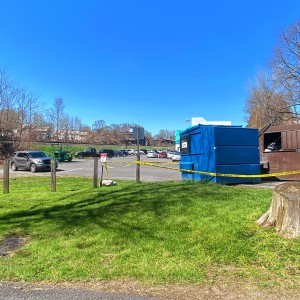 Greenfield man arrested in New York on murder charge
Greenfield man arrested in New York on murder charge
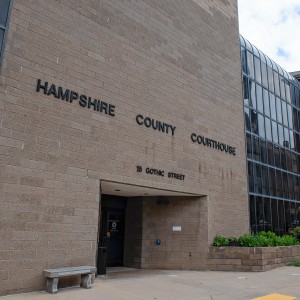 Man allegedly steals $100K worth of items from Northampton, South Deerfield businesses
Man allegedly steals $100K worth of items from Northampton, South Deerfield businesses
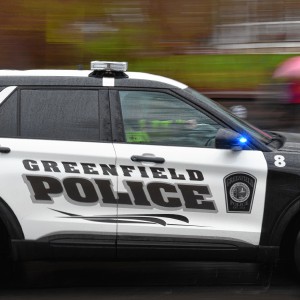 Greenfield Police Logs: April 9 to April 17, 2024
Greenfield Police Logs: April 9 to April 17, 2024
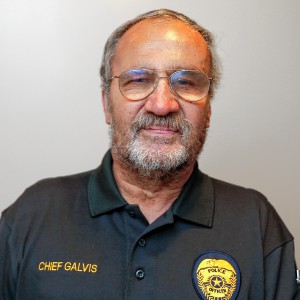 Former Leyden police chief Daniel Galvis charged with larceny
Former Leyden police chief Daniel Galvis charged with larceny
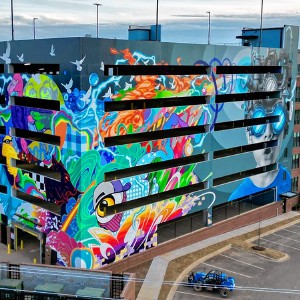 Shea Theater mural artist chosen out of 354 applicants
Shea Theater mural artist chosen out of 354 applicants
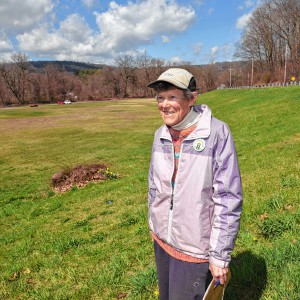 Millers Meadow idea would ‘completely transform’ Colrain Street lot in Greenfield
Millers Meadow idea would ‘completely transform’ Colrain Street lot in Greenfield
“The one you’re looking for not everybody knows about,” said Stull.
I would’ve settled for any of the three, but had already researched the 1988 crash. A hikers’ blog revealed the location, and the deadly crash’s details were posted on the Aviation Safety Network (aviation-safety.net), the Flight Safety Foundation (flightsafety.org) and Jury Verdict Review & Analysis (jvra.com).
Another Google search led me to a Berkshire Eagle sidebar from 2007, which listed all 33 aviation crashes and the resulting 18 deaths that had occurred in Berkshire County since 1987.
Lastly, I went the old fashioned route and found the AP story that was published in The Recorder by spinning through a reel of microfilm.
The double-stacked headline read, “Two die in plane crash, pilot in critical condition.”
The 28-year-old Bugby had taken off in a single-engine Cessna 127 from Westerly, R.I., bound for Bennington, Vt. His two passengers were 35-year-old Joseph Cornell, a sprocket plant foreman in Bennington, and 30-year-old Felix Beaucesne, who was born in Montague and was living in Vermont.
Bugby was licensed only to fly under visual flight rules, meaning he could get up and down and fly as far as he could see, but anything more and he was flying by the seat of his pants.
He hadn’t filed a flight plan or checked the weather, and storm clouds had moved in while he was over Adams. He radioed that he had 30 minutes of fuel left, which was about 50 miles of flight time. Air Traffic Control in Nashua, N.H. located him on radar, but couldn’t communicate directly. A commercial pilot had picked up both frequencies and relayed instructions for Bugby to fly southwesterly over the mountain and land at the Pittsfield airport.
Unable to deterimine his altitude or whereabouts, Bugby navigated the Cessna directly into the mountain. The next day a helicopter spotted the wreckage. Rescuers found Bugby alive, but Cornell and Beachesne were both dead.
The FAA’s investigation concluded the cause to be, “pilot’s inadequate preflight planning and improper inflight decisions. (Bugby) continued visual flight rules into instrument flight rule conditions.”
Joseph Cornell’s widow sued Bugby and U.S. Air Traffic Control. Her attorney, the late Manfred W. Ehrich Jr. of Rutland, Vt., was Yale educated with a law degree from Harvard. He maintained the controller had given the pilot a course into the mountainside.
Lawyers representing the ATC argued, “The overwhelming negligence of the pilot far outweighed any alleged negligence on the part of the air traffic controller.”
Both cases were settled before trial.
“A chain of events leads to crashes,” said Brian Camden, the operations manager at Orange Municipal Airport. “The crew is rushed, the passengers are in a hurry … 99 percent are preventable when taking one link out of that chain of events.”
Two fatal crashes have occurred at the Orange airport in the last five years. On New Years Day 2011, an unlicensed pilot’s Cessna clipped trees near the runway. The plane crashed and flipped, and the pilot’s daughter was killed. He pled guilty to involuntary manslaughter and was sentenced to probation.
Eight months earlier, two certified pilots on the second leg of a cross-country journey had stopped to refuel and crashed into the woods shortly after takeoff. Both died and pilot error was again the cause.
Two years ago at Hanscom Field in Bedford, a Philadelphia businessman and three other passengers boarded a Gulfstream IV bound for New Jersey. The two pilots failed to do a pre-flight check and sped down the runway with the tail rudders locked. They realized the mistake too late, and the jet skidded off the runway and exploded. All seven on board were killed.
Twenty years ago this Christmas, a Lear 35A went off the radar near the Lebanon (N.H.) airport. A search yielded nothing until three years later, when hikers happened upon the wreckage. The fuselage of that crash still remains in the woods near Smarts Mountain.
My trip up Route 112, onto Route 116, took me through Plainfield into Savoy. Mount Greylock came into view near the Adams town line and disappeared again as the road dipped down into Adams.
The town was settled by Quakers in 1762, and the meetinghouse that harbored slaves still stands. So does the home of factory owner Daniel Anthony, whose daughter Susan B. Anthony was a leading women’s rights activist.
Church steeples rise over the hillside and a statue of William McKinley lords over Main Street near Adams Community Bank. The 25th president visited twice during his presidency, arriving by train to dedicate the library and visited his friends W.B. and C.T. Plunkett — the two brothers owned the town’s largest cotton mill and McKinley made sure business was good by imposing tariffs on textile imports.
“The cotton mills were huge,” said Tarsa. “My husband grew up here and said everyone lived with the sound of a constant hum in town.”
The statue was commissioned shortly after McKinley was assasinated in Buffalo. The assailant was tried, convicted and executed less than six week’s after McKinley’s death.
The road between Adams and North Adams was flat and nondescript. I turned left onto Route 2 and took another left onto Notch Road into an unpaved parking lot, where a small rectangular wooden sign pointed the way to Bernard Farm Trail.
I shucked the hoodie, turned on my stopwatch and stopped to rest every 100 paces. It was a good sweat and I regretted not bringing water, especially after inhaling a bug. I doubled over and coughed it out.
My running shoes got wet from stepping in mud patches on the blazed trail. I began wondering if it was a wild goose chase.
Stull had said it was a 40- to 60- minute hike to the crash. Sure enough, the wreckage appeared at the 58-minute mark.
A blogger on alltrails.com had written, “Be sure to be respectful, as two people died in this crash.”
The sun shone on the heaps of white and blue metal. It looked haunting and incongruous. The seats, cockpit, and propeller were gone, but much of the fuselage was there with a faded letter “N” and number “4” on the aircraft’s right side.
I guessed that plane had been about 500 vertical feet from the top of Mount Greylock when it crashed.
I wondered if the dead and mangled branches overhead had been sheared off during the plane’s final descent.
Had Bugby flown directly into the mountain or crashed at an angle?
I said a prayer, took a few pictures and returned to the car.
At the Bern Diner in Bennington, I put two quarters in the juke box.
“It’s good to hear those old songs,” said the waitress, who was writing my order on a napkin she’d grabbed from the dispenser.
I’d wanted to play something by Buddy Holly, who died in an Iowa plane crash in 1959. His music wasn’t on the jukebox, so I settled for the Righteous Brothers and a turkey club.
Chip Ainsworth is a freelance writer whose Keeping Score column is a regular feature on The Recorder’s Saturday sports page.

 Speaking of Nature: Indulging in eye candy: Finally, after such a long wait, it’s beginning to look like spring is here
Speaking of Nature: Indulging in eye candy: Finally, after such a long wait, it’s beginning to look like spring is here Celebrating ‘Seasonings’: New book by veteran preacher and poet, Allen ‘Mick’ Comstock
Celebrating ‘Seasonings’: New book by veteran preacher and poet, Allen ‘Mick’ Comstock Faith Matters: How to still the muddy waters of overthinking: Clarity, peace and God can be found in the quiet spaces
Faith Matters: How to still the muddy waters of overthinking: Clarity, peace and God can be found in the quiet spaces A time for every purpose under heaven: Free sing-a-long Pete Seeger Fest returns to Ashfield, April 6
A time for every purpose under heaven: Free sing-a-long Pete Seeger Fest returns to Ashfield, April 6
